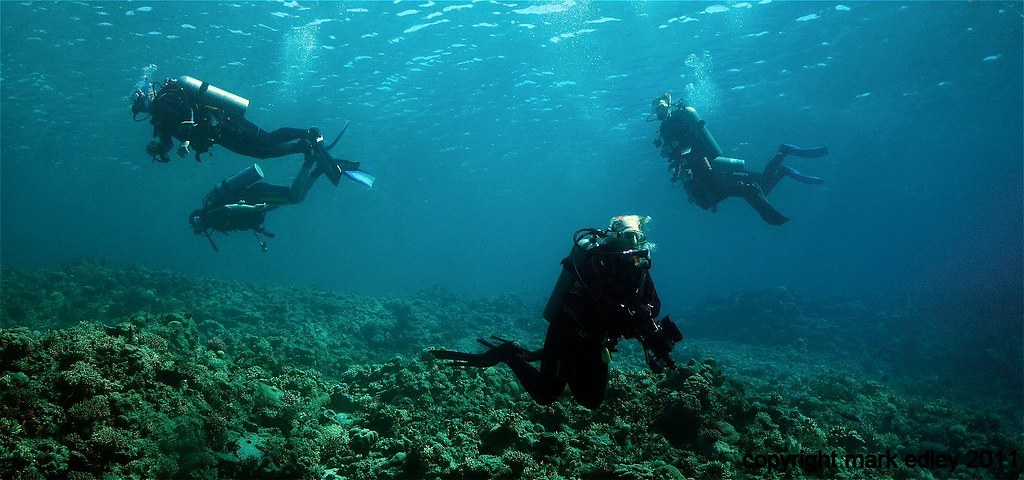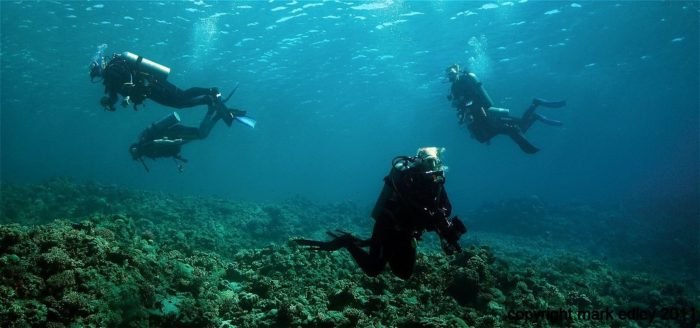
Great Dive Sites in Sanctuaries for Wildlife Enthusiasts

Photo credit: Mark Edley
Did you know America’s national marine sanctuaries offer incredible and unique opportunities for SCUBA divers? Here are some of our favorite dive sites in the National Marine Sanctuary System for wildlife lovers:
Channel Islands National Marine Sanctuary – Due to cold water upwelling, the area within this sanctuary is known to support a rich and diverse ecosystem. Kelp forests, sea caves, and the Channel Islands themselves are home to wondrous and incredible sea life.
Florida Keys National Marine Sanctuary – The Florida Keys are a world-famous dive destination. Wildlife lovers can find tropical coral reefs teeming with life within the boundaries of this sanctuary. Animals like grouper, parrotfish, moray eels, spiny lobsters, and even manatees call this sanctuary home.
Flower Garden Banks National Marine Sanctuary – Protecting incredible coral reefs off the coast of Texas and Louisiana, divers might encounter manta rays, whale sharks, fish, crustaceans, invertebrates, and more. Due to its distance from the shore and depth, this site is best suited for advanced divers.
Gray’s Reef National Marine Sanctuary – One of the nation’s largest live-bottom reefs, loggerhead turtles and more than 200 species of reef fish call Gray’s Reef National Marine Sanctuary home!
Hawaiian Islands Humpback Whale National Marine Sanctuary – From monk seals to turtles to white-tip sharks, there is no shortage of wildlife in this sanctuary! The biggest draw, though, is the North Pacific Humpback whales who travel to the sanctuary for the winter months to calve and breed.
Olympic Coast National Marine Sanctuary – Best suited for dry-suit divers, Olympic Coast National Marine Sanctuary is home to rocky reefs and tall kelp forests, offering the opportunity to see rockfish, sea urchins, and maybe even giant Pacific octopus.
Monterey Bay National Marine Sanctuary – Known as the Serengeti of the Sea, Monterey Bay National Marine Sanctuary is home to sea otters, elephant seals, rockfish, sea lions, and other kelp-forest residents.
National Marine Sanctuary of American Samoa + Rose Atoll Marine National Monument – With an average water temperature of 82 degrees F all year round, American Samoa is a great destination for divers who aren’t fans of the cold. The sanctuary’s warm waters also provide a perfect habitat for tropical reef residents, including turtles, whales, sharks, mollusks, manta ray, and fish.
Stellwagen Bank National Marine Sanctuary – Cold waters and strong currents make Stellwagen Bank a dive sit fit for advanced divers, but those who are qualified can find a seldom explored area of New England. Marine mammals are a highlight, but a number of fish species call Stellwagen Bank National Marine Sanctuary home!
For more information about diving and safety in national marine sanctuaries, click here.
Can’t make it out to a dive site in real life? No problem! Check out wildlife and habitats in six national marine sanctuaries through dozens of immersive virtual reality dives offered by the Office of National Marine Sanctuaries using your desktop, mobile device, or VR headset here.
